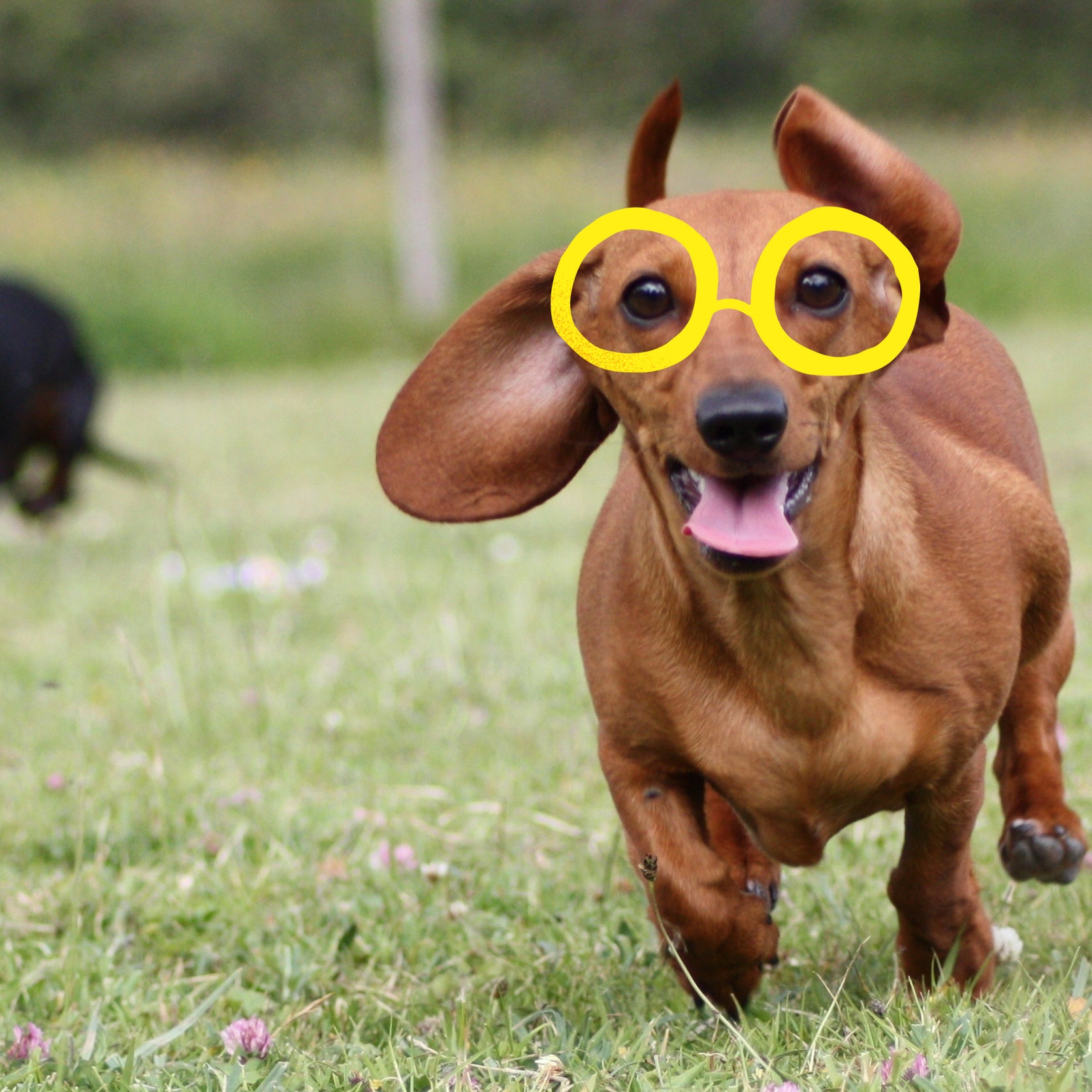
How dachshund races got their start
Dachshund races date back to the 1970s in Australia, where owners of dachshunds, whippets, and Afghan hounds raced their pups, purely for fun. They picked up in the US around the same time at the University of California Davis, whose veterinary school started hosting a Doxie Derby as part of their annual Picnic Day. Early on, these races were very casual and intended as fun outings for doxies and their owners alike. It wasn’t until 1993 when a Miller Lite commercial depicted dachshunds darting down a racetrack that the “sport” began to take off.
What do wiener races look like today?
The majority of wiener races are still just for fun, taking place as part of fundraising events or tied to Oktoberfest celebrations (dachshunds have Deutsch roots, after all!). A 25 or 50-yard distance is marked, and dachshund owners bribe their pups to come running towards the finish line with cheers, treats, and toys. You don’t have to look far to find costumes either — hot dog costumes (go figure) are the most popular theme.
Many of these races are casual, family events. With punny names like “Bark in the Park,” “Wiener Takes All,” and “Running of the Weenies,” these races’ names are as lighthearted as the events themselves. At some, you’ll find outdoor pools for your doxie to paddle around in after the racing; at others, live music for all the doxie parents in attendance. These family-forward events are designed for playful, good-natured fun.
However, some folks take racing a little bit more seriously and have turned dachshund races into a more official (and, more cutthroat) sport. Since 1996, the Wienerschnitzel Wiener Nationals have been held just south of Los Angeles at a horse racing track as part of NCAA’s Holiday Bowl. The race is comprised of doxie competitors who have been victorious at regional qualifiers in Texas, California, and other states across the southwest, and it’s not uncommon for spectator numbers to hit 10,000 or 15,000. Drama seems to arise far more frequently at these types of “official” races than at fun picnic races, which prompted the release of the 2007 film “Wiener Takes All: A Dogumentary,” highlighting allegations of things like doping and match-fixing as well as the controversy sparked by these races.
What’s the worry with wiener races?
Given dachshunds’ high risk of conditions like IVDD, critics of wiener racing are concerned that too much racing activity will harm doxies’ spinal cords. On top of that, just like with any other sport that puts animals at the center, many worry about the treatment of animals. Similar to concerns with greyhound racing, no one wants a dachshund to be abandoned or euthanized after their prime wiener racing days are over. For these reasons, the Dachshund Club of America has stated its opposition to wiener racing as a sport.
So, while we’re all for dressing our doxies up in costumes (or stylish bandanas), these races are far more fun in the company of friends and family, simply as a weekend picnic activity or part of a local fundraiser. We’ll leave the official racetracks to drivers and their cars.
